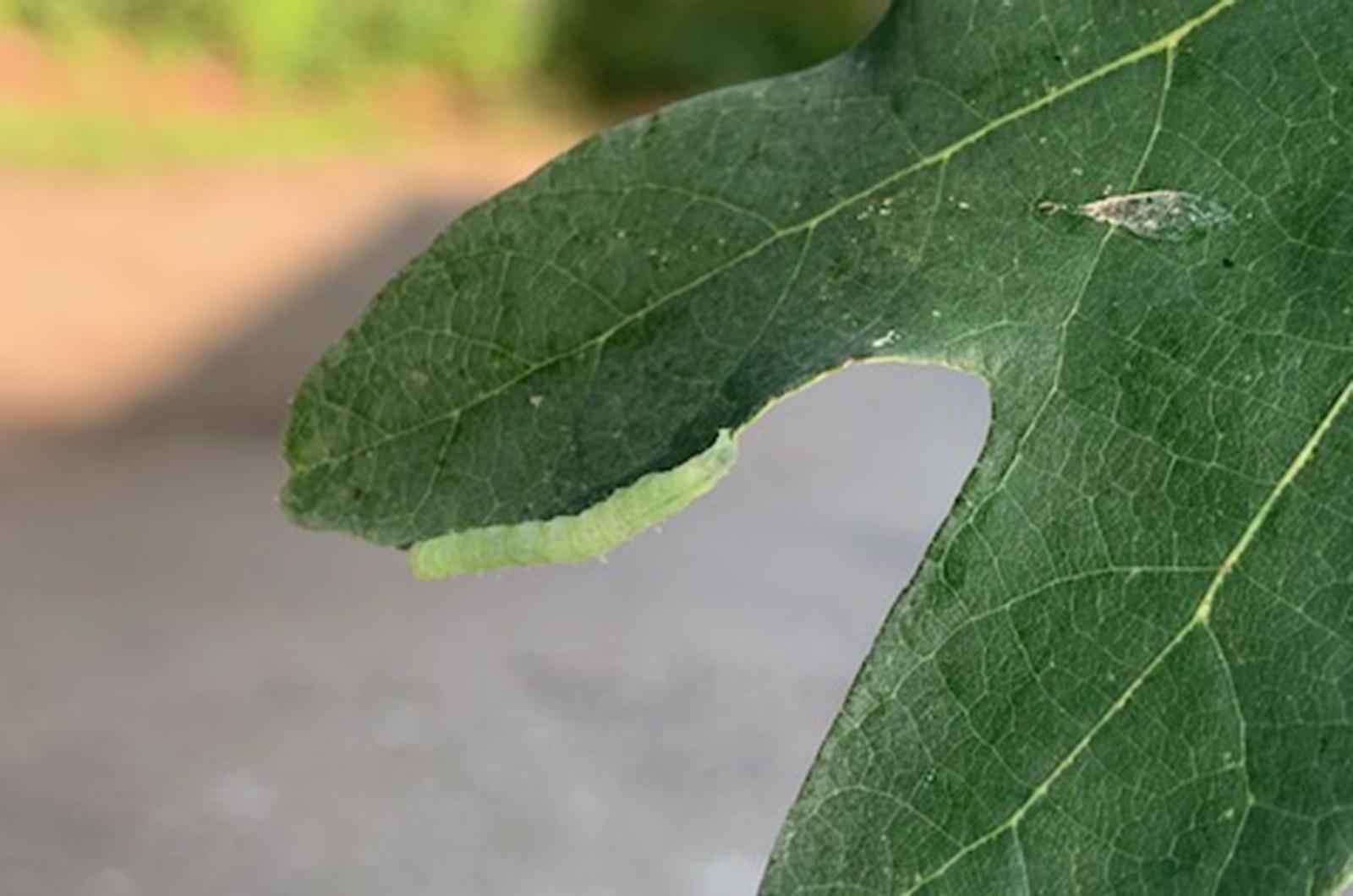Duck and run.
That is what I’ve been doing on my morning jogs and it’s the best advice I can give to other walkers, bikers and other folks who like to be outdoors.
It is inchworm season and these little green goblins’ vertical trek is anything but a walk in the park. Hanging from threads and swinging in the winds, inchworms create an obstacle course that is best avoided.
If you don’t miss them, you may get a mouthful of wiggly worm, or feel one inching down your face, neck, or other body part. Even a successful avoidance might leave you with the sticky feeling of their filament on your skin.
Inchworms are everywhere. The term “inchworm” generally describes caterpillars that lack middle legs, having legs in the front and back ends of their bodies. They have smooth, hairless bodies and move in a signature undulating style. There are many individual species that fall under the catchall name of inchworms, though these caterpillars often come from the geometridae family of moths.
Geometridae is derived from root words that mean “measuring the earth,” which refers to their unique movement allowed by that peculiar leg placement. Also called loopers, spanners, spanworms and measuring worms, these caterpillars seem to be calculating distance as they crawl in their characteristic way.
Their style of locomotion inspired popular songsters and even puppets. Sesame Street singers, David Bowie, Danny Kaye and Paul McCartney all crooned about counting numbers with this repetitive verse written by Frank Loesser: “Inchworm, inchworm/Measuring the marigolds/You and your arithmetic/You’ll probably go far.”
It might be easier to sing about inchworms rather than identify them. Worldwide there are 35,000 species that can be considered inchworms, and more than 1,000 varieties of these are in North America.
Locally, we might be seeing cankerworms, spanworm, loopers, winter moths or other members of the geometrid family. Some could be considered beneficial, providing food for birds and other wildlife and doing minimal damage to their tree host. Others, like the dreaded winter moths, can cause terrible trouble. All are eating leaves but not all will terminate the trees.
Differentiating the good inchworms from the bad can be difficult, especially when these caterpillars are small. Winter moths have two pairs of legs on the back end, while other less-damaging caterpillars have more than two pairs on their hind end. Winter moths also tend to be stouter and have a white stripe on their side. Seasonality can also be a factor when identifying these crawling cats, with winter moths usually emerging earlier in the spring.
You already know their lifecycle and, as expected, these caterpillars will feed and frolic, then pupate and eventually emerge as adult moths who will start the cycle again by laying eggs. So, know that those swinging and swaying obstacles will be back to bother us next year.
Until then, we can only keep our heads high, eyes to the front and mouths closed as we inch closer to the end of the swinging caterpillar season.
Suzan Bellincampi is Islands director for Felix Neck Wildlife Sanctuary in Edgartown and the Nantucket Wildlife Sanctuaries. She is also the author of Martha’s Vineyard: A Field Guide to Island Nature and The Nature of Martha’s Vineyard.




Comments
Comment policy »